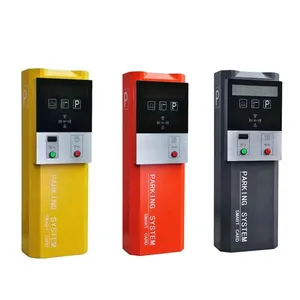

Intelligent Automatic RFID Car Parking Lot Management Car Ticket Parking System With Automatic Parking Control


Self Vending Machine Automatic Parking Lot Payment System Rfid Card Dispenser Car Parking Smart Card Parking System
















Puzzle parking buildings, an innovative solution in the realm of urban space management, are designed to maximize parking within limited areas. These structures are akin to dynamic puzzles, where vehicles are shuffled vertically or horizontally to accommodate more cars in a compact space. This category encompasses a range of automated systems that cater to the efficient storage of vehicles, optimizing space in urban environments where parking is at a premium.
Diverse in their designs, puzzle parking buildings come in various configurations, each tailored to specific site requirements and vehicle volumes. Some systems are simple two-level setups, ideal for small lots, while more complex structures can accommodate multiple cars over several levels. The adaptability of these systems allows for both above and below-ground installations, providing a versatile approach to parking challenges.
The operational mechanism of puzzle parking buildings is a marvel of modern engineering. Vehicles are moved on pallets that slide and lift, ensuring that any parked car can be retrieved without the need to move another. This automated process minimizes the risk of damage and reduces the time taken to park or retrieve a vehicle, enhancing user convenience.
Constructed with robust materials, these parking solutions are built to withstand the weight and movement of multiple vehicles. The use of high-grade steel and precision engineering ensures the longevity and reliability of the system. The materials are chosen for their durability and strength, ensuring that the puzzle parking buildings remain a steadfast component of urban infrastructure.
The advantages of implementing puzzle parking buildings are manifold. They offer a space-saving solution, essential in densely populated cities, and reduce the time drivers spend searching for parking spots. Additionally, by minimizing the area needed for parking, these systems can contribute to the reduction of carbon emissions, as drivers spend less time idling. The automation also means that fewer parking attendants are needed, which can lead to operational cost savings.
Puzzle parking buildings are not just functional; they are also adaptable to various environments. From residential complexes and commercial establishments to public spaces and private developments, these systems can be customized to fit the needs of any locale. Their suitability for different climates and settings makes them a globally applicable solution to parking woes.
With the integration of puzzle parking buildings, urban planners and developers can significantly enhance the efficiency of land use, providing a streamlined parking experience for users. These systems represent a step forward in the evolution of urban transportation infrastructure.